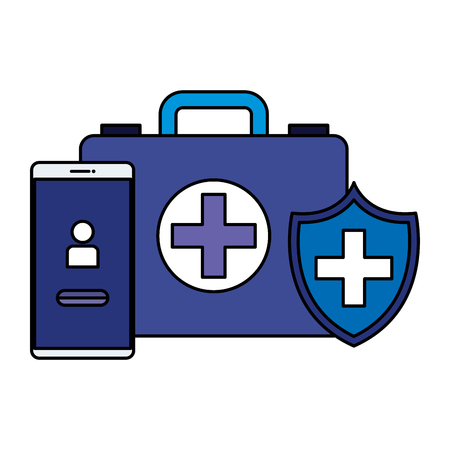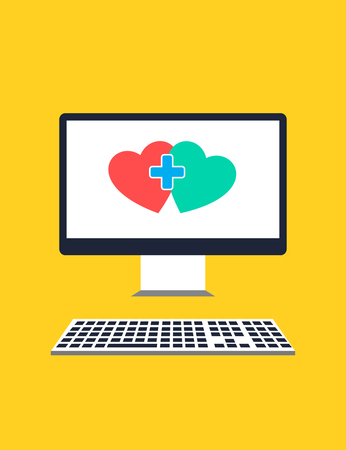Understanding Reflexology: An Overview
Reflexology is a holistic healing practice that has grown in popularity across the United States, especially among families seeking natural ways to support their well-being. At its core, reflexology involves applying targeted pressure to specific points on the feet, hands, or ears, which are believed to correspond with different organs and systems throughout the body. The foundations of reflexology can be traced back thousands of years to ancient Egypt, China, and India, where similar techniques were used as part of traditional medicine. In the modern American wellness landscape, reflexology is often categorized as a complementary therapy—meaning it works alongside conventional medical treatments rather than replacing them. Practitioners in the U.S. are typically trained and certified, ensuring a safe and informed approach for individuals and families alike. While scientific research on reflexology continues to evolve, many Americans turn to this practice for relaxation, stress management, and overall health maintenance, integrating it into their routines as part of a broader commitment to holistic wellness.
2. The Immune System: What Every Family Needs to Know
The immune system is your body’s natural defense network, playing a vital role in keeping you and your loved ones healthy. It is made up of cells, tissues, and organs that work together to protect the body from harmful invaders like viruses, bacteria, and other pathogens. For American families, understanding how this system works is key to preventing illness and supporting overall wellness.
How the Immune System Works
Think of the immune system as a security team for your body. When a threat is detected—whether it’s the flu virus or seasonal allergies—the immune system responds quickly to neutralize and remove it. This process involves several components working together:
| Component | Role in Immune Defense |
|---|---|
| White Blood Cells | Detect and destroy pathogens |
| Lymphatic System | Transports immune cells and removes waste |
| Spleen | Filters blood and supports immune response |
| Tonsils & Adenoids | Trap pathogens entering through mouth/nose |
Why Immune Health Matters for American Families
A strong immune system means fewer sick days at work and school, less reliance on over-the-counter medications, and an improved ability to bounce back from common illnesses. In today’s fast-paced American lifestyle, families are constantly exposed to stress, processed foods, environmental toxins, and lack of sleep—all of which can weaken immunity.
Common Challenges Facing American Families
- Poor nutrition due to busy schedules or reliance on convenience foods
- Chronic stress from work-life balance struggles
- Lack of physical activity and outdoor time
- Frequent exposure to germs in public spaces like schools, offices, and gyms
The Importance of Proactive Support
Given these challenges, it’s essential for families to take proactive steps toward strengthening their immune systems. Reflexology is one holistic approach that can complement traditional health practices by promoting relaxation and encouraging better circulation—both of which support immune function. Understanding the basics of immunity empowers families to make informed decisions about their health routines, ensuring everyone stays strong throughout the year.

3. How Reflexology May Support Immune Health
In recent years, reflexology has gained attention among American families seeking complementary approaches to wellness. Although research on reflexology’s impact on the immune system is still emerging, several studies have explored its potential benefits. Some clinical trials suggest that reflexology may help modulate stress levels, which are closely linked to immune function. For example, lowering chronic stress can reduce inflammation and support a more balanced immune response—key factors in maintaining overall health.
The proposed mechanisms behind reflexology’s effects include improved circulation, enhanced lymphatic drainage, and the release of endorphins. By stimulating specific points on the feet, hands, or ears that correspond to different organs and systems, practitioners believe reflexology can encourage the body’s natural healing processes. While these mechanisms are still being studied, there is evidence that reflexology sessions can promote relaxation, decrease anxiety, and potentially boost white blood cell activity—all of which contribute to better immune resilience.
It’s important to note that reflexology should be considered a supportive practice rather than a replacement for medical care. When used alongside other healthy lifestyle choices—like balanced nutrition, regular physical activity, and adequate sleep—reflexology may offer American families an accessible way to nurture their immune systems and foster holistic well-being.
4. Simple Reflexology Techniques for Home Use
Practicing reflexology at home can be a fun and relaxing way to support your familys immune health. You don’t need special equipment—just your hands and a willingness to learn. Here are easy-to-understand techniques suitable for all ages, along with tips on creating a soothing atmosphere for the best results.
Setting the Stage: Creating a Calming Environment
- Choose a Quiet Space: Select a room where your family feels comfortable and free from distractions.
- Set the Mood: Dim lighting, soft music, or gentle aromatherapy (like lavender or chamomile) can help everyone relax.
- Wash Hands: Clean hands before and after each session for hygiene and comfort.
- Use Lotion or Oil: A small amount of unscented lotion or coconut oil can make movements smoother and more pleasant.
Family-Friendly Reflexology Methods
| Reflex Area | Location | How It Supports Immunity | Simple Technique |
|---|---|---|---|
| Palm Center | Middle of the palm | Balances energy, supports overall wellness | Use your thumb to press gently in circular motions for 30 seconds per hand |
| Soles (Arch) | Middle of foot arch | Stimulates lymphatic system function | Rub in upward strokes using knuckles for one minute per foot |
| Tops of Toes | Bases of all toes on both feet | Targets sinus and upper respiratory areas | Squeeze and release each toe gently, repeating three times per toe |
| Sides of Thumb/Finger Pads | Sides of thumbs or fingers (hands) | Affects thymus gland, key for immunity in children and adults alike | Pincer-press between index finger and thumb for 10 seconds each side, repeat twice per hand |
Tips for Safe Practice with Kids & Seniors
- Be Gentle: Children and older adults have sensitive skin; use light pressure and watch their reactions.
- Make it Fun: Turn sessions into storytime or play soft family-friendly music to keep kids engaged.
- Stay Consistent: Regular short sessions (5–10 minutes) work better than long, infrequent ones.
- Hydrate: Encourage everyone to drink water after a session to help flush out toxins.
The Takeaway: Making Reflexology a Family Wellness Ritual
Integrating these simple reflexology techniques into your weekly routine can offer moments of calm while providing potential immune support. Remember, reflexology is most effective as part of a holistic approach that includes good nutrition, regular physical activity, and healthy sleep habits. With just a few minutes together, you can make self-care an enjoyable family tradition that supports both body and mind.
5. Safety, Cultural Fit, and When to Seek Professional Help
When considering reflexology as a supportive practice for immune health, it’s important for American families to address key safety considerations. Reflexology is generally safe when performed by a trained professional; however, it should not replace conventional medical care, especially for serious illnesses or chronic conditions. For those with foot injuries, circulatory issues, or specific medical concerns such as diabetes, consulting a healthcare provider before starting reflexology is recommended.
In terms of cultural fit, Americans are increasingly open to complementary therapies like reflexology, especially in holistic and integrative health communities. However, it’s essential to approach these practices with an informed and balanced perspective. Many families find that reflexology sessions offer relaxation and stress reduction—two factors that indirectly support immune function—making it a culturally relevant option for wellness routines.
To ensure a safe and effective experience, look for certified reflexologists who have credentials from reputable organizations such as the American Reflexology Certification Board (ARCB). Ask about their training, experience, and approach during your initial consultation. You can find qualified practitioners through local wellness centers or professional directories.
Finally, always remember that reflexology is not a substitute for professional medical advice or treatment. If you or a family member experiences persistent symptoms, severe pain, fever, or signs of infection, consult your primary healthcare provider promptly. Integrating reflexology into your family’s wellness plan should be done thoughtfully and in collaboration with licensed health professionals when necessary.
6. Integrating Reflexology with a Healthy Lifestyle
For American families interested in holistic health, combining reflexology with healthy daily habits can amplify immune support and overall wellness. While reflexology offers targeted relaxation and potential immune benefits, it works best as part of a comprehensive lifestyle approach.
Balanced Nutrition as a Foundation
Prioritize a diet rich in fruits, vegetables, lean proteins, whole grains, and healthy fats. These foods deliver essential vitamins and minerals—like vitamin C, zinc, and antioxidants—that help your immune system function at its best. Encourage family meals where everyone can enjoy colorful plates and try new nutritious recipes together. If you’re unsure about dietary needs, consider consulting a registered dietitian for personalized guidance.
Get Moving Together
Physical activity is another pillar of immune health. Aim for at least 150 minutes of moderate exercise each week for adults, and an hour per day for kids. Family walks after dinner, backyard games, or weekend hikes are fun ways to stay active and bond as a unit. Exercise not only supports the immune system but also boosts mood and energy levels.
Quality Sleep Matters
Establish consistent sleep routines for everyone in the household. Quality rest allows the body to repair and strengthens immunity. Try limiting screen time before bed and creating calming pre-sleep rituals like reading or gentle foot reflexology sessions to wind down together.
Stress Management & Connection
Chronic stress can weaken immune responses. In addition to reflexology’s relaxing effects, encourage open communication, practice mindfulness or meditation as a family, and make time for laughter and shared activities. Building strong emotional bonds is key to resilience and well-being.
By integrating reflexology into a lifestyle centered on nutrition, movement, restorative sleep, and emotional connection, American families can create a powerful toolkit for supporting immune health—one that nourishes body, mind, and spirit together.


